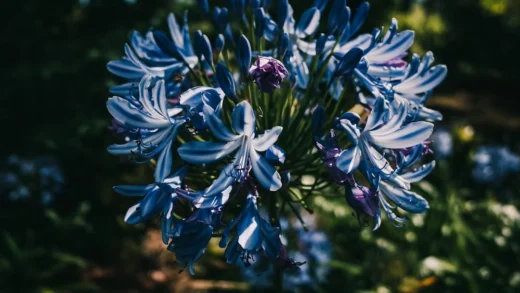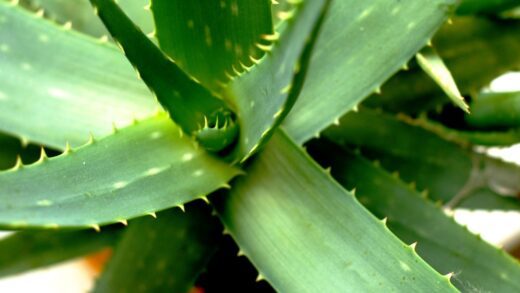Providing the right nutrients at the right time is fundamental to cultivating a healthy amaryllis that produces spectacular blooms year after year. Fertilization is not about forcing growth but rather about systematically replenishing the energy that the bulb expends during its dramatic flowering cycle. The bulb itself is a remarkable storage organ, but its reserves are finite and must be restored to fuel future growth and flowering. Understanding when to fertilize, what type of fertilizer to use, and when to withhold nutrients is directly linked to the plant’s natural growth phases. A well-fed amaryllis will not only produce larger and more numerous flowers but will also be more resilient and likely to produce offsets.
It is a common misconception that an amaryllis needs to be fertilized as soon as it is planted or while it is actively blooming. In fact, the opposite is true. A newly purchased bulb contains all the energy it needs to produce its first magnificent display of flowers. Fertilizing at this stage is unnecessary and can even be detrimental, potentially leading to an excess of salts in the soil which can burn the nascent, delicate roots. Therefore, you should not apply any fertilizer from the time you plant the bulb until after the flowering period has completely finished. The initial show is powered entirely by the energy stored within the bulb from the previous season’s growth.
The critical period for fertilization begins immediately after the last flower has faded. This marks the start of the foliage growth phase, a time when the plant’s primary objective is to replenish the bulb’s energy reserves. The long, strap-like leaves emerge and begin the vital process of photosynthesis, converting sunlight into the chemical energy that will be stored for the next year’s bloom cycle. It is during this extended period of vegetative growth, typically lasting through the spring and summer months, that a consistent feeding schedule is most beneficial. Providing the necessary nutrients supports the development of large, healthy leaves, which in turn leads to a larger, more robustly charged bulb.
The choice of fertilizer is important for balanced growth. A water-soluble, balanced fertilizer is generally the best option for amaryllis. Look for a product where the N-P-K (Nitrogen-Phosphorus-Potassium) numbers are relatively equal, such as a 10-10-10 or 20-20-20 formulation. These balanced fertilizers provide the essential macronutrients needed for all-around plant health: nitrogen for leafy growth, phosphorus for root and flower development, and potassium for overall plant vigor and metabolic functions. Alternatively, a fertilizer formulated for flowering houseplants can also be used effectively. It is always crucial to dilute the fertilizer according to the manufacturer’s instructions, as a solution that is too concentrated can damage the plant’s root system.
The fertilization schedule
The timing of fertilizer application is directly tied to the amaryllis’s growth cycle. The feeding regimen should commence only after the plant has finished blooming and is focusing on leaf development. As the leaves grow and mature, the plant’s demand for nutrients increases significantly. During this active growth phase, a regular application of a diluted, balanced liquid fertilizer every two to four weeks is an effective schedule. This provides a steady supply of nutrients that the plant can use to build strong leaves and, consequently, store maximum energy in the bulb.
This consistent feeding schedule should be maintained throughout the late spring and summer months, for as long as the leaves are green and actively photosynthesizing. Some growers prefer a “weekly, weakly” approach, using a quarter-strength solution of their chosen fertilizer every time they water. This method provides a more continuous but less concentrated supply of nutrients, which can be particularly beneficial in preventing the buildup of fertilizer salts in the soil. Whichever schedule you choose, consistency is the key to ensuring the bulb is well-nourished.
As late summer transitions into early autumn, it is time to prepare the plant for its upcoming dormancy period. This involves gradually ceasing fertilization. This tapering-off of nutrients, combined with a reduction in watering, signals to the plant that the growing season is ending. This process is a crucial trigger that helps the bulb to harden off and enter a state of rest. A sudden stop to feeding is not recommended; rather, gradually increase the interval between feedings over the course of a month before stopping completely.
During the entire dormancy period, no fertilizer should be given to the plant. The bulb is in a resting state with its metabolic processes slowed down dramatically, and it is not capable of taking up nutrients from the soil. Fertilizing a dormant bulb is not only useless but can also be harmful, as the unused fertilizer salts will accumulate in the soil and can damage the roots when the plant begins its next growth cycle. Feeding should only resume after the next dormancy period is complete and the plant has once again finished flowering.
Types of fertilizer
While a balanced, water-soluble fertilizer is the most common recommendation, there are other options that can be used to nourish an amaryllis. Slow-release granular fertilizers, for instance, can be incorporated into the top layer of the soil at the beginning of the foliage growth phase. These granules are designed to break down and release their nutrients gradually over a period of several months each time the plant is watered. This can be a convenient option for those who prefer a more hands-off approach, as it eliminates the need for regular mixing and application of liquid feed.
Organic fertilizers are another excellent choice for amaryllis. Options such as compost tea, fish emulsion, or worm casting solutions provide a gentle and broad spectrum of nutrients and micronutrients. These natural fertilizers also contribute to improving the overall health and structure of the soil. While they may have a lower N-P-K ratio than synthetic fertilizers, they release their nutrients slowly and are less likely to cause fertilizer burn. When using organic options like fish emulsion, be prepared for a temporary, earthy aroma after application.
Some growers advocate for a fertilizer that is slightly higher in phosphorus and potassium during the post-bloom period. Phosphorus is known to be particularly important for root development and the initiation of flower buds, while potassium contributes to overall plant health and resilience. A “bloom booster” type fertilizer, which might have an N-P-K ratio like 10-30-20, can be used occasionally. However, a balanced fertilizer is generally sufficient and safer for long-term use, as an excess of any single nutrient can interfere with the uptake of others and create imbalances in the soil.
It is also important to consider micronutrients, which are trace elements that plants need in very small quantities but are still essential for healthy growth. Most high-quality commercial fertilizers, both synthetic and organic, will contain a range of micronutrients such as iron, magnesium, and manganese. If you are mixing your own soil or using a very basic fertilizer, you may need to supplement with a micronutrient blend. Healthy, dark green leaves are usually a good indication that the plant is receiving all the nutrients it requires, including these vital trace elements.
Application techniques
The correct application of fertilizer is just as important as the choice of product and schedule. When using a water-soluble fertilizer, it should always be applied to soil that is already moist. Applying liquid fertilizer to dry soil can cause a rapid uptake of concentrated salts, which can shock and burn the plant’s delicate roots. A good practice is to water the plant thoroughly with plain water first, allow it to drain for about an hour, and then apply the diluted fertilizer solution as a second step.
When fertilizing, pour the solution directly onto the soil surface, avoiding contact with the leaves and the neck of the bulb. This ensures the nutrients are delivered directly to the root zone where they can be absorbed. The volume of fertilizer solution applied should be enough to moisten the entire root ball, with a small amount eventually trickling out of the drainage holes. This confirms that the nutrients have been distributed throughout the pot. Always follow the dilution rates recommended on the product label; a stronger solution is not better and is likely to cause harm.
Over time, even with proper application, fertilizer salts can accumulate in the soil, appearing as a white crust on the surface or around the pot’s rim. To prevent this buildup, it is beneficial to periodically flush the soil. This can be done every few months during the active growing season. To flush the pot, simply place it in a sink or outdoors and slowly pour a large volume of plain, room-temperature water through the soil. The amount of water should be roughly four times the volume of the pot. This process leaches out the excess salts, refreshing the soil environment for the roots.
It is crucial to observe the plant for signs of over- or under-fertilization. Under-fertilized plants may exhibit slow growth, pale or yellowish leaves, and a general lack of vigor. Conversely, over-fertilization can cause burnt leaf tips, stunted growth, and the aforementioned salt buildup on the soil. If you suspect you have applied too much fertilizer, the best course of action is to flush the soil thoroughly with plain water to remove the excess salts. Adjusting your feeding practices based on the plant’s response is a key skill in successful long-term cultivation.
Nutrients and the reblooming process
The role of fertilization is intrinsically linked to the amaryllis’s ability to rebloom successfully. The magnificent flowers are a direct result of the energy that was stored in the bulb during the previous year’s foliage growth phase. A well-fed bulb will be larger, firmer, and have the necessary resources to produce one or more strong flower stalks, each bearing multiple blooms. Without adequate nutrition during the leaf-growing period, the bulb will be depleted and may only produce leaves, or nothing at all, in the following season.
Phosphorus, in particular, is often cited for its role in flower production. While nitrogen is essential for green, leafy growth, phosphorus is a key component in the energy transfer processes within the plant and is vital for the development of roots, seeds, and flowers. Ensuring the plant receives adequate phosphorus during its energy-storing phase is thought to help in the initiation of the flower buds that are forming deep within the bulb for the next season. This is why some gardeners opt for a bloom-boosting formula as part of their feeding regimen.
Potassium is the third major nutrient, and its role is akin to a general health tonic for the plant. It regulates many metabolic processes, helps the plant use water efficiently, and strengthens it against environmental stresses and diseases. A plant that has received sufficient potassium will be more robust and vigorous overall. This general health is a prerequisite for the energy-intensive process of producing large, vibrant flowers. A balanced approach, ensuring adequate levels of all three major nutrients, is the most reliable path to success.
Ultimately, a successful reblooming is the result of a holistic approach to care in which proper fertilization plays a starring role. It works in concert with providing adequate light for photosynthesis, appropriate watering to transport nutrients, and a necessary dormancy period to trigger flowering. By diligently feeding your amaryllis after it blooms, you are not just caring for the leaves you see; you are investing in the unseen promise of the spectacular floral display to come. This forward-thinking approach is the true secret to enjoying these magnificent plants year after year.


















